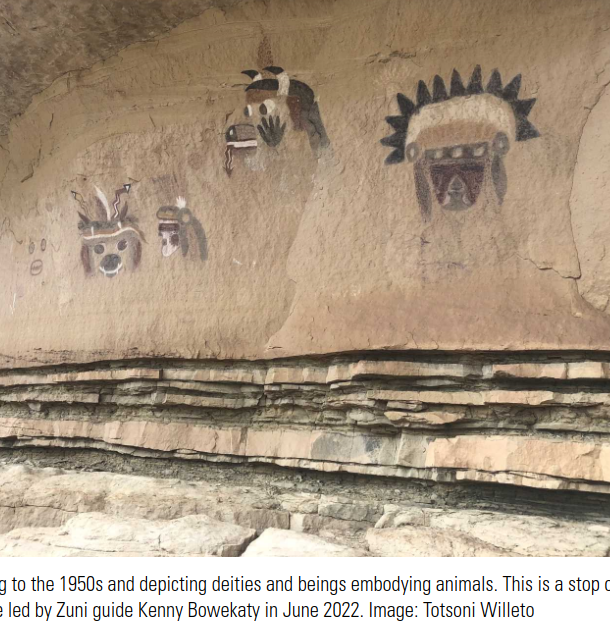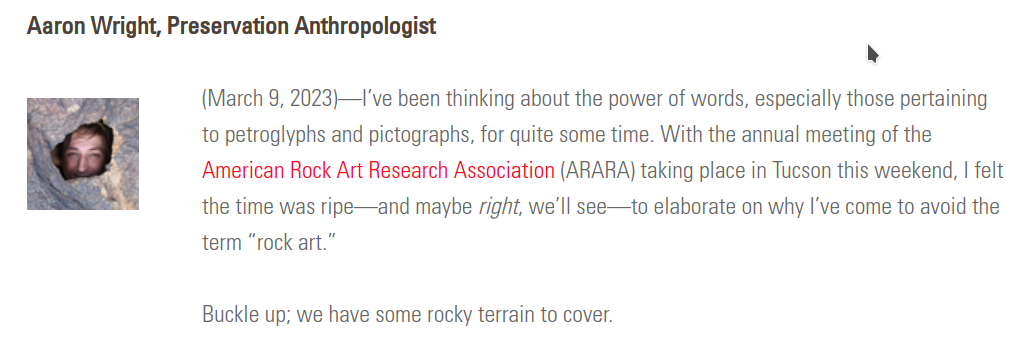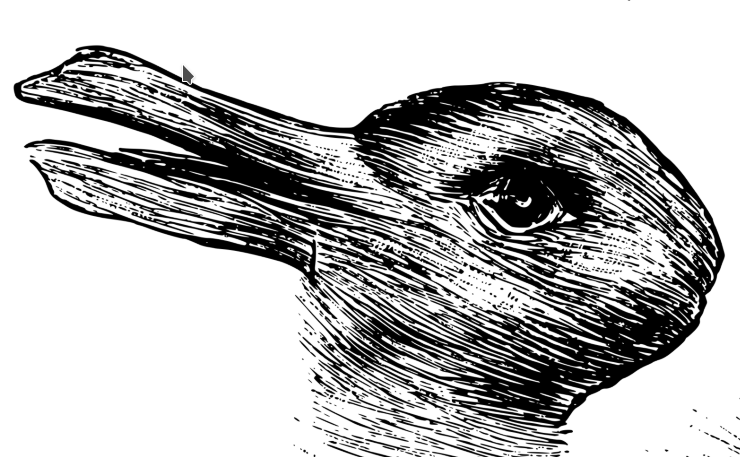
Why I no longer arts artifacts into artefactual fits and starts : religion/art/ritual/drama/routine
First written in March 2023 at substack. For discussions on my use of the slash "/" see Posts on punctuation and the mark.
Reading/not-reading Aaron Wright's ‘Why I No Longer Call It “Art” ’
Aaron Wright’s ‘Why I No Longer Call It “Art” ’ (Archaeology Southwest, 2023-03-09) makes me leap over the planned but not yet written No. 1 post on the… —gap (& world & should) and jump into a sub-section. If only because Aaron does not at this stage, 11 Mar 2023, appear to have any comments. And I’ll probably go leave a comment or two after getting this post together.
First I outline my position before I read it, and then see how we get along. This is an experiment.

Firstly, I’ve been strongly influenced by the perspective that what we call art or religion or belief systems or ritual or drama, the arts separate from practical practices, are late divisions enabled by more diverse economies. And that earlier they were all practices on a continuum of specialness to practicality, and over which an extra layer of latter-day modernity has been overlain recently, or, more likely, the realpolitik of late antiquity.
The classic example being public rituals of the tragedy/sacrifice in city-states that are eventually turned into plays by the likes of Αἰσχύλος. What starts as a mass of participants becomes the drama.
For me even ritual is a bit much of an over-qualified term, but the reference for this perspective would be my recent neo-pyrrhonist readings, on the difference between practices and doctrinal-based methods like the imperial dogmaticism of late Roman Christianity.
Secondly, it follows, that I regard the slashing together of our late categories (we have inherited from Rome and it’s reboots) as a better thing: religion/art/drama/ritual/arts into a neo-Pyrrhonism re-suspension of those outcomes into a blurry block, as well as the habitual routines of chop-chop thought themselves (attachment/duḣka/inbalance/beliefs with & without faith-in-faith). This is the best way to re-value all values once reframed (or even deconstructed).
For the basic categories are always th emost treaherous. They are covered in the muck of ages (i admit it might be muck all the way down…)
In much of archaeology, we no longer have the frame to ask how they build their world with practices that leave these artefacts buried in the dirt of ages. Even ritual is too much. It might be better to just say they did stuff, they did things. They lived.
Look what I found in the muck.
By the way, all this means, when asking where 'art' or 'religion' come from, or if there is a gene for artiness or religiousness, are erroneous in frame. You can’ get there from here.
I will argue (one of the reasons for this blog) that many of our frames/categories are actually outcomes, that have forgotten their histories. Stories that are perhaps unrecoverable, or nearly so. Because we do not notice this difficulty, and we see this thing before us, so… —but— …we then mistake the things in the frame, as requiring a cause within the same frame, when they are an outcome of processes outside the frame, or indeed, produce the frame we perceive them through, and which blinds us to what might come before.
And we forget why we came into the room.
It is quite messy here in the muck.
Many things are outcomes, and not causes in themselves, nor require a maker to cause it per se. We use a short cut, a bias to see agency where there is none, and so expect there to be a maker/build/creator somewhere. It is a constant human predilection. That is two difficulties confounded, the bias to see agency where there is none, and to expect our frames to have causes when they merely have an effect of light on perception. [2024 major edit: I still cannot put this down clearly. ① some outcomes of other processes are seen to be their own thing and require their separate explanation (something/someone makes them)and ② the success of an outcome itself blinds us to the processes actual 'origin', and again we seek to credit some other agency (god etc) and/or seek a gene for 'art' or 'religion' or 'drama'.]
I thought this introduction would be about 50 words.
Now to read the article.
What did I learn?
About the conversation in North America, and how similar it is to here in Australia.
What can I use?
It’s a fantastic personal exploration of the questions of frames and frameworks with reference to art, archaeology. etc.
What was I reminded about? What did I reminisce?
My own limited time with ‘first nations’ here in Australia. (I use that term aware it’s not popular everywhere here.)
Compare contrast
See the introduction above.
Reaction?
Not all the frames are lost. Listen.

